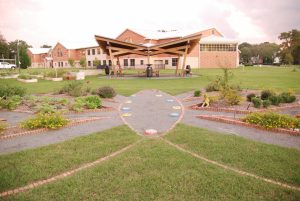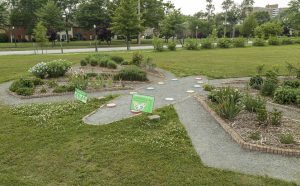As I take a quick glance of the school yard, I cannot help contain my excitement about going out there and turning it into a productive piece of Holton’s environment. For a moment, my mind shifts to my previous years in Kenya when after coming home for school breaks, my mother would enlist family labor by allotting my siblings and me a neglected piece of our yard to tend to. This would definitely involve a lot of mulching,
invasive species removal, weeding using pretty antiquated tools and ploughing, most of the time under the scorching tropical sun. However, regardless of how daunting the process seemed, the best part was always after completion when one would stand a few feet from the allocated piece, scan the new scenery and celebrate the fact that the transformed land could now be put into better use.
Holton ES will be celebrating its annual Harvest Festival in a few weeks, an event that provides funding for the school. I am so excited to be part of those helping Holton make this day a success by creating a conducive environment for the thousands of guests who will attend the festival this year. I have been specifically allocated to help weed the butterfly garden- a project that was founded by Balzer and Associates, Inc. in a bid to create for the students an outdoor classroom and learning gardens. The outdoor

The butterfly classroom and butterfly garden at Linwood Holton ES. Around the classroom are water jars to collect rain water
classroom resembles a butterfly with a roof designed to collect rain water. Next to the classroom, a garden resembling a butterfly sits playing not only an invaluable role of a rain garden but also a study site where different tree species thrive. Though in a small capacity, I notice the school’s effort to keep the James River watershed sustainable.
We all have trouble finding the edges of the butterfly garden. The weeds have grown so high that at some point am entirely covered by the malicious weeds. It is evident that the young trees in the garden struggle to keep up with stiff competition posed by the weeds. But with more effort we find the edges which help us to work our way around the entire butterfly garden. The scorching sun is not easily discernible as we all engage in meaningful conversations while working our way through the garden. At once I realize how the activity had brought us together from complete strangers to Richmond residents who share a similar passion for the environment.
After collectively putting in 120 hours of hard work, we leave the butterfly garden as a study site that every student at Holton would relish. We cannot help imagine the look on
the students’ faces when they see the transformed garden the following week. However, our greatest hope is that the festival will help generate more funds that will continue to make Holton ES a place of academic and environmental stewardship.


